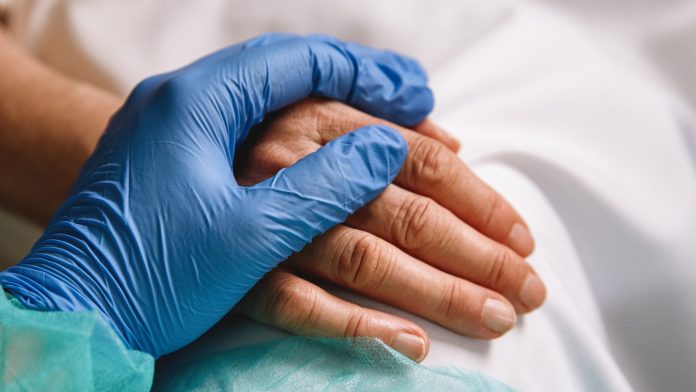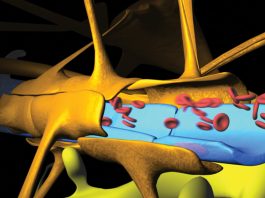In a bid to provide better care to patients and implement national strategies to reduce the risk of strokes, we hear from the European Stroke Organisation as it begins to roll out its largest stroke project ever undertaken, the Stroke Action Plan for Europe.
The mission of the European Stroke Organisation (ESO) is to reduce the burden of stroke in Europe. ESO also acts as the voice of stroke in Europe and aims to improve stroke care by providing medical education to healthcare professionals and the lay public. In order to reach this goal, ESO oversees many programmes focused on stroke treatment and care, (i.e. guidelines, the Stroke Action Plan for Europe – SAP-E) education (i.e. Stroke Summer School, Stroke Winter Schools, European Master Programme in Stroke Medicine) and sharing of best practices (i.e. ESO-EAST, Department to Department Visit Programme, ESO blog). The ESO supports several committees comprised of volunteer members in order to drive forward its mission via practical programming.
The Stroke Action Plan for Europe (SAP-E)
The Stroke Action Plan for Europe (SAP-E) is one part of implementing this mission, addressing a European institutional level. SAP-E provides a basic road map and sets targets for the implementation of evidence-based preventive actions and stroke services till 2030. At present, less than half of all patients with stroke in Europe receive appropriate care, with large inequalities between and within countries. ESO believes that by adopting evidence-based principles of prevention and care, the burden of stroke in Europe can be substantially reduced with large cost savings for society as a whole. The Stroke Action Plan has been published together with the Stroke Alliance for Europe (SAFE). As a pan-European initiative, it will convene authorities, health care providers and patients together to reduce the burden of stroke by a collaborative and systematic effort.
SAP-E is the largest stroke project ever undertaken in Europe and has four overarching targets:
- Reduce the absolute number of strokes in Europe by 10%;
- Treat 90% of all patients with stroke in Europe in a stroke unit as the first level of care;
- Have national plans for stroke encompassing the entire chain of care; and
- Fully implement national strategies for multi-sectorial public health interventions promoting and facilitating a healthy lifestyle, and reducing environmental (including air pollution), socio-economical and educational factors that increase the risk of stroke.
The SAP-E is currently in the implementation phase with an aim of realising major change across seven domains of stroke care. Country representatives have been identified and the first implementation meetings have already taken place. Of course, the global pandemic has impacted all aspects of stroke care and treatment, including SAP-E implementation which has begun via video meetings. You can view the rollout meeting on the SAP-E homepage.
Providing support during COVID-19
ESO recognises the multitude of changes its members have implemented in their practice to continue to provide stroke care amid a plethora of COVID-19 related restrictions. As the voice of stroke in Europe, ESO aims to provide support and resources for stroke professionals. Accordingly, last summer, we created space on the ESO website where we continue to collect and curate resources for stroke care during COVID-19. In addition, we use this as the driver for a social media campaign focused on patient care and getting the message out that stroke still matters. Patients need to be reminded to continue to seek treatment and care for stroke services as much as stroke service providers need to have quick access to new information. Together we continue to support the sharing of vital information among our members.
ESO represents over 20,400 members, many of those via organisational members. While national political and medical leaders are deciding how to handle COVID-19 on a country-by-country basis, we encourage our organisational members to share country specific information and learnings with each other via the stroke resources space on our website, social media, the ESO newsletter and our society blog.
National disparities in stroke treatment
As detailed in the SAP-E publication both political awareness of the burden of stroke and the organisation of stroke care in European countries are still largely heterogeneous. A recent ESO survey1 provided a snapshot of the differences in the structure and organisation of stroke care in 44 countries. Not in all countries health services and political structures are linked to a national stroke society to better co-ordinate stroke services and improve the quality of stroke care. Starting from the pre-hospital phase, locally organised EMS systems with written protocols for acute stroke, obligatory transport routes to the closest suitable hospital or procedures for pre-hospital notification of hyper-acute stroke are present in many countries but not in all. Although stroke is a time-dependent disease fewer than 10% of stroke patients reach the hospital within 60 minutes of symptoms.
Onset and this delay have not decreased in the last years in many countries. The definition of Stroke Unit and a Comprehensive Stroke Centre in different countries may not be perfectly overlapping and not all countries have nationwide active networks of hospitals with stroke units or stroke centres which follow written protocols.
Moreover, only a minority of countries have established a certification system with well-defined quality criteria, or a timely monitoring system for benchmarking delivery of care. Among the options for acute stroke treatment, endovascular treatment is the most challenging one from an organisational point of view, and there is a huge variation in the delivery of this treatment across Europe.
However, the first and most accessible treatment for stroke, i.e. admission in dedicated stroke units, is not widely available for stroke patients in several European countries. Fewer than 20% of patients with acute ischaemic stroke had access to treatment with IVT with considerable inter- and intra-country variability.
Similar differences between countries are present in access to rehabilitation pathways. Overcoming inequalities in access to stroke care is a demanding challenge that can only be overcome through an ambitious, long-term, multi-professional project coordinated by ESO as a scientific society that interacts with the political level, both in Europe and in each individual country.
Looking ahead
It was important for us to move forward with the 2020 joint ESO WSO congress as a virtual event and we are already looking forward to our upcoming conference ESOC 2021 later this year. Our conference is one of our flagship projects and an important corner stone in the dissemination of knowledge and education. Over 5,000 participants from all over the world are attending to receive the latest information in stroke science.
The COVID-19 crisis brought along many different forms of advancing and furthering education and information and, as a society, we want to stay active and agile in order to best support our members. As many organisations might have stopped some of their projects and initiatives, we have invested further resources in order to supply added benefits and to strengthen our voice for Stroke. Resources have been invested in the advancement of our guidelines and a revised guideline platform, which will have an immediate impact on the daily practices of our members. Save the date of 11 May 2021 – we will share four guidelines in a special webinar setting.
Beyond a professional space for scientific exchange, ESO is a society for colleagues and friends to network, learn and grow together through mutual support and a shared drive to reduce the burden of stroke in Europe. One day at a time, we move forward together virtually until we can meet again.
References
- European Stroke Journal. 2019;4(1):13-28. doi:10.1177/2396987318786023)
European Stroke Organisation (ESO)
+41 61 686 77 76
esoinfo@eso-stroke.org
www.eso-stroke.org









